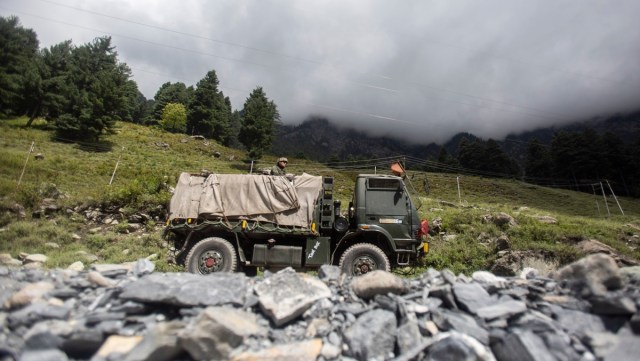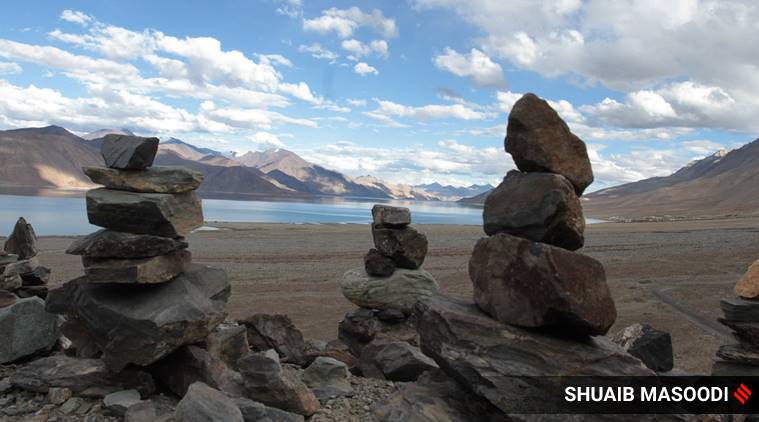This is the key takeaway from the 12-hour meeting at the Moldo border point between Indian and Chinese military commanders Monday.

Sources said while there has been no agreement on “disengagement” at the friction points, the two sides have come to an understanding on not escalating the situation given that troops of the two armies are within firing range of each other.
This, sources said, is the first step towards efforts to “ease tensions” following the September 10 agreement in Moscow between External Affairs Minister S Jaishankar and Chinese Foreign Minister Wang Yi on a five-point approach to resolve the tense situation.
Sixth round of talks| India, China agree to stop sending more troops to frontline
A joint press release Tuesday stated: “On September 21, the Chinese and Indian Senior Commanders held the 6th round of Military Commander-Level Meeting. The two sides had candid and in-depth exchanges of views on stabilizing the situation along the LAC in the China-India border areas.”
 The last two meetings, since mid-July, had failed to achieve any breakthrough in resoliving the situation. (File)
The last two meetings, since mid-July, had failed to achieve any breakthrough in resoliving the situation. (File)
“They agreed to earnestly implement the important consensus reached by the leaders of the two countries, strengthen communication on the ground, avoid misunderstandings and misjudgments, stop sending more troops to the frontline, refrain from unilaterally changing the situation on the ground, and avoid taking any actions that may complicate the situation.”
Story continues below this ad
“The two sides also agreed to hold the 7th round of Military Commander-Level Meeting as soon as possible, take practical measures to properly solve problems on the ground, and jointly safeguard peace and tranquility in the border area,” it stated.
Sources said “non-escalation” could hold the key to “building trust” between the two sides, before moving towards disengagement and then de-escalation.
If “non-escalatory behaviour” holds for a reasonable period of time, it will give confidence to take the next step. And to take the process forward, sources said, another round of talks can then take place between the commanders and the diplomats.
The Indian team at the Moldo meeting was led by XIV Corps Commander Lt General Harinder Singh. With him was Lt General PGK Menon, expected to take charge of the Leh-based Corps in October.
Story continues below this ad
 A scenic view of Pangong lake in Ladakh can be seen through a small tower of stones collected by tourists on the banks of Pangong lake. (Express photo by Shuaib Masoodi)
A scenic view of Pangong lake in Ladakh can be seen through a small tower of stones collected by tourists on the banks of Pangong lake. (Express photo by Shuaib Masoodi)
Also in the team was Naveen Srivastava, Joint Secretary (East Asia) in the Ministry of External Affairs. Fluent in Mandarin, he had been dealing with his Chinese counterparts at the meetings of the Working Mechanism for Consultation & Coordination on India-China Border Affairs (WMCC). This was the first time that an official of the MEA joined the military talks.
Don’t miss from Explained| Understanding India-China 5 point action plan to reduce LAC tension
The Chinese team was led by Major General Liu Lin, Commander of the South Xinjiang Military Region.
Sources said the emphasis in the joint press release that the two sides will “stop sending more troops to the frontline, refrain from unilaterally changing the situation on the ground, and avoid taking any actions that may complicate the situation” means that both will assess the non-escalatory behaviour, and if it instils confidence, they will take the next steps.
Story continues below this ad
Non-escalation, in a sense, will be seen as a “confidence-building measure”, a top source told The Indian Express.
At the meeting in Moldo, India repeated its core demand of complete disengagement at the friction points and de-escalation across eastern Ladakh. The Chinese, on the other hand, wanted Indian troops to first vacate key heights on the south bank of Pangong Tso and the Chushul sub-sector.
Sources said while another round of talks at the Corps Commander-level is expected soon, India is also looking to keep its troops deployed in Ladakh through the winter should there be no progress at the talks table.
There are an estimated 50,000 troops on each side of the LAC in Ladakh, backed by tanks, artillery and air defence assets.
Story continues below this ad
Also Read| Month before standoff, China blocked 5 patrol points in Depsang
Since mid-July, talks have not made much headway with the Chinese reluctant to complete the disengagement process, especially on the north bank of Pangong Tso where they continue to occupy the ridgeline at Finger 4. It is 8 km west of Finger 8 which India says marks the LAC.
Tensions heightened again towards the end of August when Indian troops, in pre-emptive moves to foil Chinese plans, occupied key heights on the south bank of Pangong Tso and on the stretch down to Rezang La and Rechin La. Indian troops are currently positioned on Gurung Hill and Magar Hill, overlooking the Spanggur Gap which was used by China to launch an offensive in 1962.
Meanwhile, a new study released Tuesday by the geopolitical intelligence platform Stratfor stated that China has been rapidly expanding its military infrastructure along the entire LAC with India, especially since the Doklam standoff.
Story continues below this ad
“The 2017 Doklam crisis appears to have shifted China’s strategic objectives, with China more than doubling its total number of air bases, air defense positions, and heliports near the Indian border over the past three years,” it stated.
“A significant portion of Beijing’s recent infrastructure developments is aimed directly at strengthening its ability to project air power along the entire Indian border at a time when New Delhi itself is struggling to rebuild its air power.”
“By forcing India to respond in kind, China’s aggressive strategy is leading to a greater concentration of military assets in heavily disputed areas along the border that could raise the risk of potential escalations and sustained conflict,” it stated.



 The last two meetings, since mid-July, had failed to achieve any breakthrough in resoliving the situation. (File)
The last two meetings, since mid-July, had failed to achieve any breakthrough in resoliving the situation. (File) A scenic view of Pangong lake in Ladakh can be seen through a small tower of stones collected by tourists on the banks of Pangong lake. (Express photo by Shuaib Masoodi)
A scenic view of Pangong lake in Ladakh can be seen through a small tower of stones collected by tourists on the banks of Pangong lake. (Express photo by Shuaib Masoodi)





